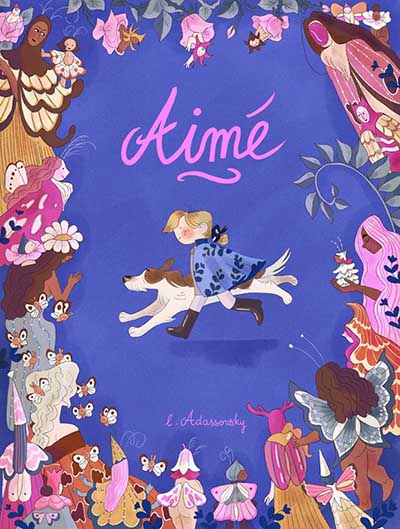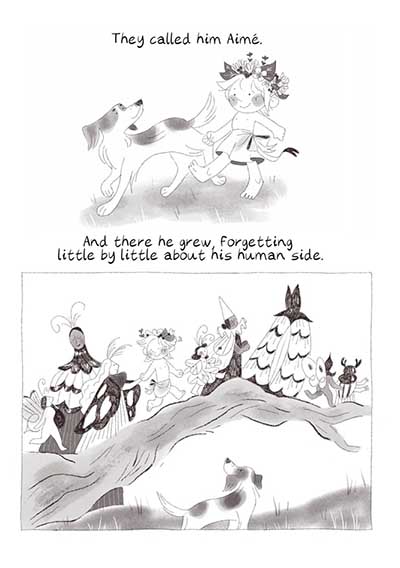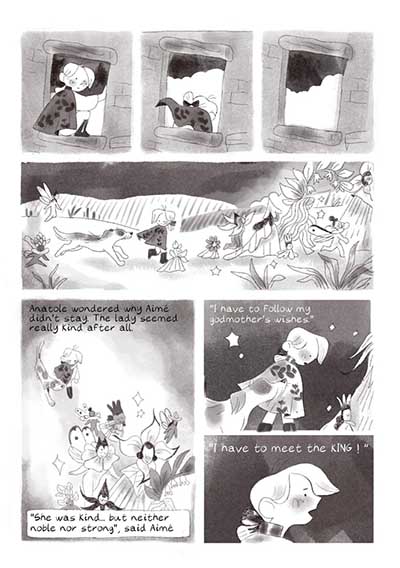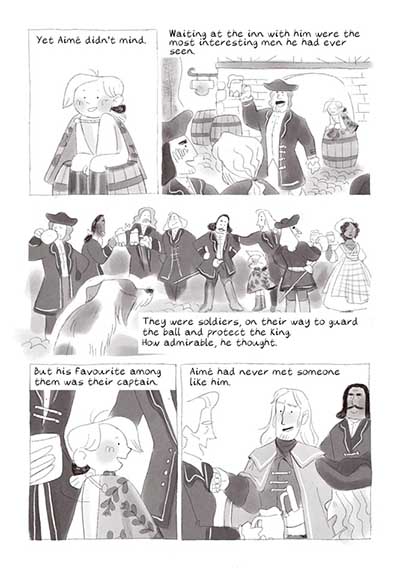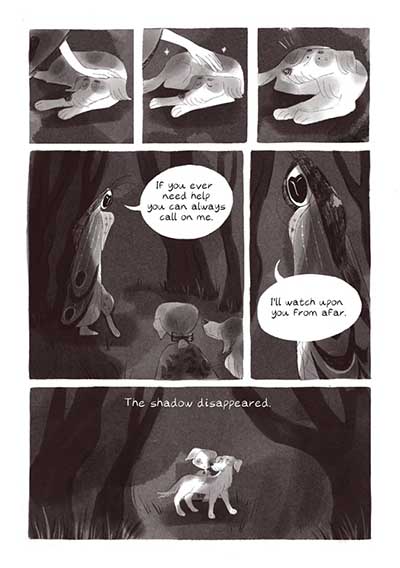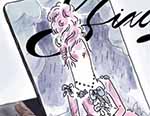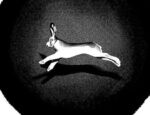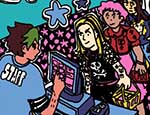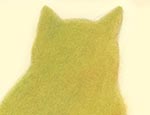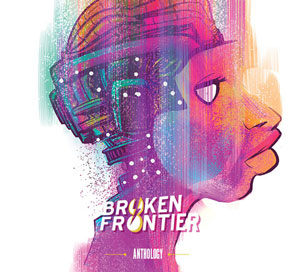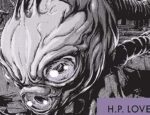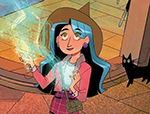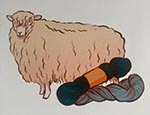Having had the pleasure of reviewing L. Adassovsky’s Hibernation Guide for Rabbits and Hares at Broken Frontier for last year’s ShortBox Comics Fair, seeing her name pop up again in this year’s fair was particularly exciting. Comics from Adassovsky always emanate whimsy, warmth and adventure, and Aimé, a 132-page fairy tale, about fae, flowers and magic is no exception.
Everything about the cover of Aimé is simply delightful. Sketched in delicate line drawings, and in keeping with a beautiful, woodsy colour pallet, the border features so many delicately designed fairy tale characters that it almost becomes a ‘look-and-find’ gimmick, to see what stunning detail you can spot next. Some of my favourites included smiling little cherub-like creatures emerging from blooming flower buds and beautiful fairy creatures decked out in elaborate dresses and flower crowns.
The beauty continues inside with the black-and-white ink illustrations. The story (of course beginning with ‘once upon a time’) follows a human boy named Aimé, who has been raised by fairy creatures his whole life. As lovely as this may sound, the intentions behind Aimé’s introduction to the world of the fae are much more sinister; a Great Fairie took him from the human realm, knowing he would have to leave as he grew older. She had grown cruel and bitter after years of being forgotten about by humans, and relished the thought of him being miserable, belonging truly to neither humans nor fae: ‘a heart adrift with nowhere to call home’.
Accompanied by his faithful dog Anatole, who refuses to leave the boy’s side, Aimé grows up among the fae folk (most of whom are much kinder than the Great Faerie), forgetting more and more about where he came from. When the day finally comes that Aimé is too old to remain in the world of the fae, he is at first excited to enter the realm of humans. With his godmother’s urging him to find someone kind, noble and strong, Aimé immediately sets his sights on the king, meeting people from all walks of life along the way; some who are helpful and kind, and others much less so. However, the further he integrates into the human realm, the less he is able to spot fairies. And a truly jaw-dropping moment around half-way through the comic forces Aimé to re-evaluate everything.
I enjoyed the subtle allusions to classic fairy tales; the three fairies caring for the child reminded me of the famous Flora, Fauna and Maryweather from Sleeping Beauty and the fabulous, decadent ball being thrown by the king was reminiscent of Cinderella. Much like the Brothers Grimm or Hans Christian Andersen, Adassovsky toes the line between something which is sweet and wholesome, but features darker and more sinister elements beautifully. Narratively, the story is strong and exciting, with the visual elements only enhancing this. It was lovely to see some of Adassovsky’s trade marks on show too, such as the subtle blush on the character’s cheeks.
Overall, Aimé is another triumph from Adassovsky; a gorgeously illustrated and emotionally rich tale that feels both timeless and new. It captures the melancholy of growing up and the magic of finding your place in the world with real tenderness. Adassovsky’s work continues to be a joy to read and a feast for the eyes; a story to treasure, revisit, and lose yourself in completely.
L. Adassovsky (W/A) • ShortBox Comics Fair, £11.00
Review by Lydia Turner





